While we often focus on outside threats to our family’s health such as pollution, viruses, or additives in food, however the real danger might be lurking under your sink, floating in your air, or clinging to your floors.
What’s most concerning? The very products we use to keep our homes feeling clean and safe may actually be introducing hidden toxins into the environment we trust most. And it turns out, our pets, especially dogs may be warning us long before we notice the signs.
Your Dog Might Be Telling You Something You Can’t See
A ground-breaking 2025 study fitted over 100 dogs with silicone tags designed to detect airborne chemical exposure in real-life homes. The findings were alarming: each tag picked up around 40 different airborne chemicals, including phthalates and flame retardants, many of which are common in household cleaners, furniture, and synthetic fragrances.
Even more concerning, these same dogs showed urinary biomarkers strongly associated with bladder cancer.1
And this isn’t an isolated observation. Dogs are being increasingly recognised as valuable sentinels for human exposure-related disease. As a 2020 study noted:
"Dogs provide valuable insights as sentinels for exposure-related human disease because they share similar exposures in the home, have shorter lifespans, share many clinical and biological features, and have closely related genomes."2
Why it matters: Dogs live in the same spaces we do. They walk on the same floors, breathe the same air, and often have their noses closest to the ground, just like babies and toddlers. If they're being affected, we should be paying close attention.
What’s Really In That “Clean” Scent?
The scent of lemon-fresh or lavender-glow might be comforting, but it could also be a source of VOC overload.
A recent peer-reviewed study published in Chemosphere by the Environmental Working Group (EWG) found that 30 popular household cleaning products emitted over 530 unique volatile organic compounds (VOCs). Of those, 193 were classified as hazardous, including likely carcinogens and respiratory irritants.
Notably, fragrance-free and green-labelled products emitted far fewer VOCs, making them a safer alternative, especially for children and pets.3
Pre-schoolers Carry the Burden, Right From the Start
Children’s bodies are still developing, which makes them more vulnerable to chemical exposure. In a 2025 study, researchers found 34 harmful substances, including phthalates, bisphenols, and parabens in over 90% of urine samples taken from 201 preschool-aged children across the U.S.
These substances, many of which are endocrine disruptors, are linked to developmental delays, hormonal imbalances, and long-term health risks. And many of them are found in products we bring into our homes daily: cleaners, shampoos, plastic containers, and synthetic fragrances.4
So, What Can You Do About It?
You don’t have to overhaul your entire home overnight, but small, intentional changes can significantly reduce your family's exposure to harmful chemicals.
Here are 5 simple, high-impact swaps to start today:
- Choose fragrance-free, certified non-toxic cleaning products with transparent ingredient lists.
- Avoid aerosol sprays and synthetic-scented candles, which often contain hidden VOCs under generic "fragrance" labels.
- Vacuum frequently using a HEPA filter, which can capture dust-borne chemicals often missed by standard filters.
- Use DIY-friendly solutions like vinegar, baking soda, or Castile soap for general cleaning.
- Store all cleaning products up high and out of reach from children and pets, even natural ones.5,6
A Healthier Home Starts Here
Your home should be a sanctuary, not a slow-release source of harmful chemicals. Studies are now speaking louder than marketing slogans. Our pets are silently showing us the effects. And children, with their developing systems, are the most vulnerable of all.
At Gutology, we believe wellness begins in the environments we inhabit, just as much as in the food we eat or the supplements we take. Our mission has always been to support a healthier microbiome and a more balanced way of living.
So, as we look to the future, we’re paying close attention to what touches your skin, your lungs, and your life, not just your gut.
Stay tuned.






